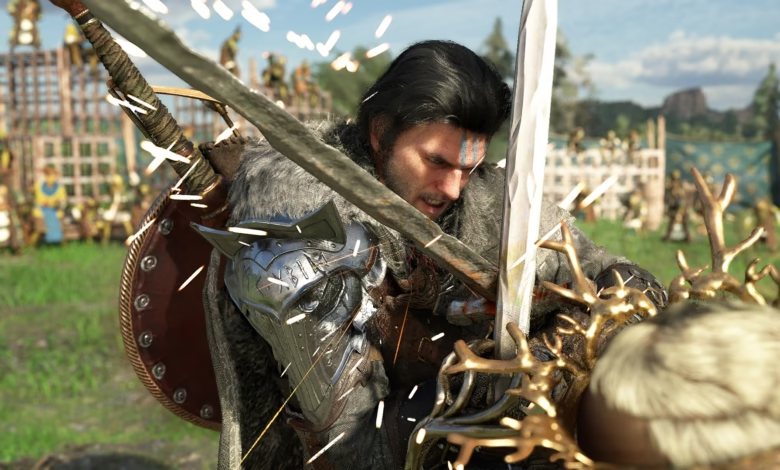Master Crimson Desert’s Combat by Taming Its Tricky Controls

▼ Summary
– The author struggled with Crimson Desert’s complex combat controls, which require multiple button combinations and have noticeable input lag, making fights feel sluggish.
– Crimson Desert is marketed as an “open world action game” rather than an RPG, focusing on combat and physics-based destruction rather than character customization or deep storytelling.
– The game features real-time destruction powered by a custom engine, showcased in the demo through physics-based crumbling watchtowers and dynamic combat scenarios.
– Excessive particle effects during magic attacks often obscure the action, making it difficult to read enemy movements and follow-up attacks in group combat.
– Pearl Abyss has primarily showcased guided combat sequences, leading the author to suspect the game may prioritize action over other elements like quests or narrative depth.
Mastering Crimson Desert’s combat requires patience with its complex control scheme, but the payoff delivers thrilling, physics-driven battles unlike anything else in open-world gaming. During a recent hands-on demo, the game’s intricate fighting mechanics proved both exhilarating and frustrating, a system that rewards creativity but demands precision.
The combat demo showcased protagonist Kliff engaging in large-scale battles where every move felt weighty and impactful. Magic-infused swordplay allows for aerial combos, ground pounds, and devastating projectile attacks, blending fantasy brawling with technical inputs reminiscent of fighting games. However, executing these flashy maneuvers isn’t always smooth, many require simultaneous button presses, leading to occasional input delays that disrupt the flow.
One standout feature is the grab system, which offers multiple branching options. A simple grab slams enemies down, while directional inputs turn them into projectiles. There’s even a spinning throw that turns foes into makeshift weapons, though pulling it off consistently proved tricky. The depth of these mechanics suggests a combat system built for mastery, but the learning curve is steep, especially when particle effects clutter the screen during chaotic encounters.
Boss fights highlight both the best and worst of Crimson Desert’s design. One battle forced players to dismantle an opponent’s stamina before triggering a multi-step sequence involving magic, levitation, and timed strikes. While creative, these rigid solutions clash with the otherwise improvisational combat, feeling more like frustrating quick-time events than organic gameplay.
Visually, the game impresses with its destructible environments and lush landscapes, though excessive particle effects sometimes obscure the action. The real-time physics engine ensures that every explosion and collapse feels dynamic, but flashy visuals shouldn’t come at the cost of readability in combat.
Pearl Abyss has positioned Crimson Desert as an open-world action game rather than an RPG, emphasizing combat over deep storytelling or character customization. If that focus holds, players should expect a combat-centric experience akin to Elden Ring: brutal, rewarding, and unapologetically demanding.
While the controls may need refinement before launch, Crimson Desert’s unique approach to melee combat sets it apart from the crowd. Whether it becomes a masterpiece or a missed opportunity depends on how well its intricate systems mesh with the open-world structure. For now, it’s a game that demands patience, but the potential for greatness is undeniable.
(Source: PC Gamer)
